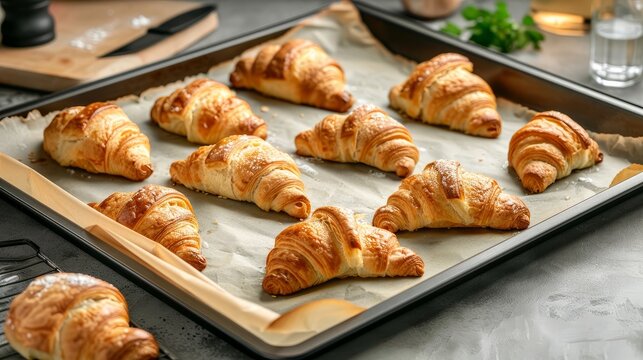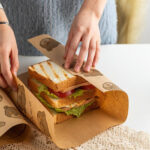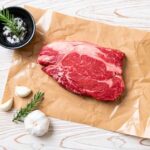Introduction
Parchment paper has found its place in the kitchens all over the world, particularly to do with baking and roasting. It is smooth-surfaced, does not stick, and can withstand high temperatures, making it one of the most favored devices by both professional chefs and amateur bakers in the comfort of their homes. The usual question is: Can parchment paper go in the oven
The answer is short: yes, although there are significant conditions and limitations. This post can discuss everything you wanted or needed to know about the safety of using parchment paper in the oven, some ideas on how to use it, some substitutes, and myths about parchment paper.
What Is Parchment Paper?
Parchment paper, a kind of cellulose-derived paper, has been treated or coated to be non-stick and heat-resistant. It is usually treated with silicone that provides it a smooth appearance as well as making it resistant to moisture and grease.
It is of two kinds:
- Bleached paper for parchment papers: white-colored and treated with chlorine.
- The parchment is not bleached: Dark brown and not treated, it is often advertised as a sustainable alternative.
They are safe to use ovens when they are employed correctly.
How It Works in Cooking and Baking
Parchment paper are made in such a way that they can resist the heat of the ovens and sticky foods. It also reduces extra greasing and eases cleaning. It is therefore best suited when one wants to bake some cookies, cakes, or pastries, and even roast some vegetables or fish.
It is also covered with silicone so that it has the ability to withstand heat and won’t get soaked through when handling greasy or wet foods. Nevertheless, it is important to know the heat limits and precautions to use the application so as to prevent the risks.
Is Parchment Paper Oven Safe?
General Temperature Limit
A majority of parchment paper is oven-safe for ovens up to 425°F-450°F (215°C up to 230°C). If you surpass this point, the parchment will begin to darken, curl, crack, or even become fragile. While it isn’t likely to catch on fire at this temperature, it can pose a risk to safety when used improperly.
Always check the packaging of your parchment paper for the manufacturer’s specified heat limit.
Manufacturer Guidelines
Different brands may have slightly different specifications. Here’s a table of popular brands and their maximum temperature limits:
| Brand | Max Oven Temp (°F) | Coating Type |
| Reynolds | 425°F | Silicone |
| If You Care | 428°F | Silicone |
| Kirkland Signature | 420°F | Silicone |
| Baker’s Signature | 450°F | Silicone |
Always follow the manufacturer’s guidelines for safety and effectiveness.
Can Parchment Paper Catch Fire in the Oven?
Fire Hazards Explained
The parchment paper has been made to deflect heat; it’s nonetheless paper. It could ignite when it is exposed to flames directly or when it comes into contact with the heating element of the oven. It usually occurs in the event that the edges curl up or extend over the top of the sides of the oven.
To prevent fire dangers:
- Do not let parchment paper come into contact with the oven’s wall as well as the heating element.
- Don’t use parchment when broiling, as temperatures could exceed 500°F.
- Don’t heat an oven by placing parchment in the oven by itself.
Tips to Avoid Burning or Fire
- Cut off excess parchment, ensuring the edges do not hang over.
- Lay the parchment flat and secure it to the baking tray.
- Use parchment paper only for cooking techniques that involve the use of direct heat or flames, for example, cooking or broiling.
- Do not reuse dry, brittle parchment or paper that has been scorched.
Correct Usage of Parchment Paper in the Oven
Lining Baking Sheets and Cake Pans
It is among the most widely used and successful applications. Parchment paper:
- Stops the stickiness.
- Aids in spreading heat equally.
- It reduces the requirement for greasing.
The ideal candidate to use for:
- Cookies
- Cakes
- Muffins
- Brownies
Tips: To make cakes that are round, draw the pan’s bottom onto the parchment, then cut it down to the appropriate size.
Cooking “En Papillote”
“En papillote” is a French cooking method that involves wrapping food inside a parchment bag before baking it. This technique traps flavors and steam, which makes it ideal for cooking vegetables, fish, and herbs.
Steps to cook en papillote:
- Then cut the parchment into a heart-shaped shape.
- Put the ingredients in the middle.
- Close edges by folding and sealing them.
- Bake in the manner that is suggested.
It has a delicious aroma, is flavorful, and is aromatic.
Roasting Vegetables or Meat
Use parchment paper to line baking dishes while roasting vegetables, potatoes, or chicken. It helps prevent burning and sticking as well as making cleanliness easier.
Beware of using parchment paper for roasting when the temperature is more than 450 degrees F.
Reusable or One-Time Use?
It is technically recyclable. However, it may be recycled if
- It’s not greasy or burned.
- It’s not turned on, or it’s not dark.
If the parchment shows indications of wear, throw it away the item. Degraded parchment could cause health risks or compromise the food’s quality.
What Not to Do With Parchment Paper
Never Use Under a Broiler
The intense direct heat can reach 500 degrees F; that is dangerous for parchment. Choose broiler-safe foils or broiler-safe options as an alternative.
Avoid Touching Heating Elements
Edges of curled-up parchment can be positioned to touch the bottom or top elements and then ignite. Make sure the parchment is flat and doesn’t extend over the tray.
Do Not Use Above Recommended Temps
If the temperature in the oven exceeds the rating of the paper, it could cause the parchment to:
- Then turn brown
- Curl up
- Eliminate odor
- Get caught in the fire. Make sure you monitor the oven whenever it is cooking within the temperature range of the parchment’s threshold.
Alternatives to Parchment Paper
If you’re not able to find parchment, or you’re looking for a more durable option, look into the following alternatives:
Silicone Baking Mats
Non-stick, reusable, and resistant to heat (up to 490°F). Perfect for bread, cookies, and other pastries.
Pros:
- Long-lasting
- Eco-friendly
- Simple to wash
Cons:
- A higher cost upfront
- Not disposable
Aluminum Foil
It is great for the lining of pans; however, it is not non-stick unless the pan has been greased.
Pros:
- Heat-resistant
- Versatile
Cons:
- It is time to oil it.
- It is possible to tear it up easily.
- Not eco-friendly
Greasing the Pan
This method is based on butter, oil and cooking spray.
Pros:
- Always available
- Zero trash
Cons:
- Messy
- Uneven non-stick results
| Alternative | Oven-Safe | Reusable | Non-Stick |
| Silicone Mats | Yes | Yes | Yes |
| Aluminum Foil | Yes | No | No |
| Butter/Oil Greasing | Yes | No | Sometimes |
Common Myths About Parchment Paper
Myth: All Baking Paper Is the Same
False. The parchment and wax paper cannot be interchangeable.
- Parchment paper: Oven-safe
- Wax paper: Coated in wax, it melts and may cause fire
- Freezer paper is used as a wrap for food, not baking.
Myth: Parchment Paper Affects Taste or Smell
The paper used for baking is food grade and tasteless. It doesn’t impart the scent or taste of baked goods if used properly.
Myth: Parchment Is Not Recyclable
Although used parchment isn’t recyclable because of food residues, Uncoated or clean parchment is compostable. Be sure to check with your waste disposal provider for guidelines.
Conclusion
What do you think? C? When utilized correctly. It’s a safe, practical and useful kitccan parchment paper go in the ovenhen gadget that makes cooking and baking easier. Like all materials subjected to heat, this one is important to handle with care.
The most important points to be aware of:
- A majority of parchment paper is suitable up to 450°F.
- Do not use broilers or close proximity to any open flame.
- Make sure it is flat and away from heat sources.
- Think about silicone mats and foil to be used in high-heat situations.
When you bake cookies, roast veggies, or prepare delicate papillote meals, parchment paper will be your most reliable companion for baking. Just be aware of the security practices and use guidelines.
Have a wonderful (and healthy) time baking!
Can Parchment Paper Go in the Oven & How to Get 20% Off by Contacting Deli Paper Shop?
FAQs
Do you think parchment paper can get on oven racks or walls?
No. Keep it in a straight line and cut to minimize the risk of fire.
Is parchment paper reusable?
It’s fine if it’s clear and it’s not discolored or brittle. Remove it if burned.
Do I have to use parchment paper in the microwave?
Yes. It’s safe to microwave and is great to steam or heat.
What happens when parchment paper is burned?
The color will probably change to either black or brown, may flake, and then release the smell of burning. Take it off immediately if the situation occurs.
Pizza can be baked on a parchment sheet.
Sure, but you should take it off halfway when it is baking at extremely high temperatures (above 350°F).








